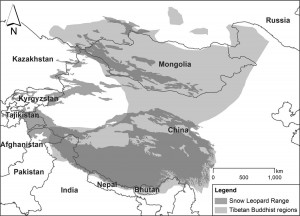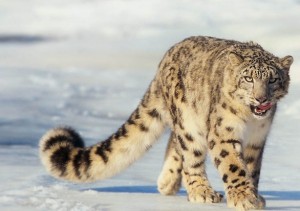Monks on the Tibetan Plateau are serving a critical role in the fight to conserve the endangered snow leopard. Over 300 monasteries inhabit the same sky-high region as the snow leopards of the Tibetan Plateau, and have been shown to protect more snow leopard habitat than local nature reserves.
Living at extremely high altitudes and supremely adapted to survive in the harsh conditions on the Tibetan plateau, the snow leopard, one of the most elusive creatures on earth, is known by locals as “the mountain ghost”.
Panthera, an organisation whose mission is to ensure the future of wild cats through scientific leadership and global conservation action, published a study earlier this month: Role of Tibetan Buddhist Monasteries in Snow Leopard Conservation. The study was led by Dr Li Juan of Peking University and co-authored by Panthera’s Dr George Schaller and Dr Tom McCarthy; leading Chinese NGO (non-government organisation), Shan Shui, and the Snow Leopard Trust.
Currently, there are between 3,500-7,000 snow leopards in 12 Asian countries, with over half in China and Tibet. The study partners worked with four Tibetan Buddhist monasteries on a programme aimed at mitigating human-snow leopard conflict and training monks to monitor and protect wildlife. It also supports monasteries in teaching about the conservation value of snow leopards through festivals and education programs. In three years there have been no reports of snow leopards being killed in the study area.
Tibetan Buddhism considers the snow leopard and its habitats sacred. Tibetan Buddhism is practised across 80% of the snow leopard range, and so monastery-based snow leopard conservation could apply over a much broader area than the Tibetan Plateau.
Panthera’s Vice President, Dr George Schaller, explained, “Buddhism has as a basic tenet the love, respect, and compassion for all living beings. This report illuminates how science and the spiritual values of Tibetan Buddhism can combine their visions and wisdom to help protect China’s natural heritage. Such an approach to environmental conservation needs to be emulated by all the world’s faiths.”







 Print
Print Email
Email